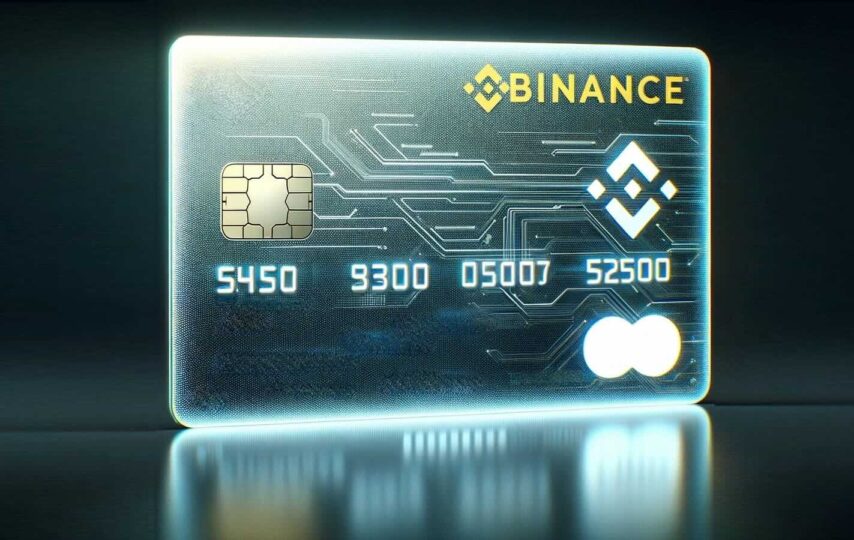The cryptocurrency industry has been rocked by the announcement from Binance, one of the world’s largest crypto exchanges, that they will cease European debit card services on December 20, 2023. This move signals a major shift for Binance and sends ripples throughout the crypto payments landscape. For European users of the Binance card, it necessitates difficult transitions to new services. This article explores the background, impact, alternatives, and future of crypto payments in a post-Binance Europe.
The Rise and Fall of the Binance Visa Debit Card
Introducing the Binance Card
In September 2020, Binance launched its Visa debit card throughout the European Economic Area (EEA). The card allowed users to instantly convert crypto funds to fiat currency and make purchases anywhere Visa was accepted. It provided a seamless way for crypto enthusiasts to integrate digital assets into daily spending. The card was directly linked to Binance accounts, bypassing third-party wallets and simplifying transactions. With perks like cash withdrawals and merchant payments, the Binance card became a staple of crypto finance.
Regulatory Challenges and Service Disruptions
However, the Binance card soon faced regulatory obstacles within the strict EU financial ecosystem. Compliance demands and fractured crypto regulations disrupted services like card payments and SEPA transfers. Binance was forced to halt euro deposits/withdrawals due to issues with payment processors. Most recently, regulatory pressure led card issuer Contis to end its relationship with Binance. These challenges showcase the volatile nature of crypto services under regulatory scrutiny.
The Strategic Decision to Discontinue Service
Faced with this uncertain regulatory environment, Binance made the strategic decision to discontinue its EEA debit card services. This aligns with Binance’s shifting operational priorities to meet compliance regulations. While a blow to everyday crypto usage, Binance Pay provides an alternative on-ramp to crypto adoption. This card cancellation encapsulates the adaptable nature of crypto services responding to external pressures.
The Consumer Impact of Losing a Crypto Lifeline
Disappointment and Disruption for Current Cardholders
The approximately 300,000 EEA cardholders are most directly impacted. Many integrated the Binance card into daily spending, enjoying its seamless crypto conversion. With this vital bridge between crypto and fiat severed, consumers must radically adapt purchasing behavior and seek new avenues to spend holdings. The discontinued card cuts off convenient access to crypto liquidity, breeding frustration.
Cryptocurrency Community Response
Cryptocurrency forums feature existing users sharing replacement tips and lamenting the lost convenience. Industry analysts are dissecting the deeper meaning of Binance’s strategic shift. Most agree that while this is a temporary blow, new services will arise to fill the gap if consumer demand persists. This could catalyze further crypto payment innovation.
Consequences for Crypto Adoption in Europe
More broadly, ceasing card services may slow mainstream crypto adoption in the EEA. The card was a simple gateway to using crypto like fiat for everyday purchases. New adopters may be deterred by losing this user-friendly service. However, discontinuation may also incentivize other providers to innovate and capture ex-Binance users through improved services aligned with regulations.
Surveying Alternative Crypto Cards
Introducing Card Alternatives
Fortunately, other crypto cards offer similar perks to the now defunct Binance offering. Major exchanges like Bybit and Crypto.com have their own debit card products. Independent providers like Wirex and Revolut also present options. Each alternative has unique features to serve different consumer needs.
Comparing Features and Services
When comparing card alternatives, key factors include:
- Supported crypto assets – Coins and tokens allowed for conversion
- Conversion fees – Rates for crypto to fiat exchanges
- Spending power – Daily/monthly purchase and withdrawal limits
- Rewards programs – Cashback or perks offered
- Availability – Countries supported within the EEA
- Security – Fraud protections and protocols
Selecting the Right Card
Choosing the best alternative depends on individual circumstances. Frequent travelers may prioritize generous limits, while HODLers want extensive coin support. Those focused on savings seek cards with cashback or rewards. Review options against personal habits and assets to determine the optimal replacement card.
Making a Smooth Transition Post-Binance
Strategies for Switching Crypto Cards
To seamlessly transition from the Binance card, users should:
- Review card spending history and needs
- Research suitable alternatives and apply
- Transfer crypto funds to new card provider
- Update any recurring payments
- Close Binance card account to avoid fees
- Read new card terms and conditions
The Future Crypto Payment Ecosystem
Losing a major player like Binance reshapes the competitive landscape. Other card startups will vie to capture customers, accelerating innovation. Crypto to fiat on-ramps must be rebuilt through new solutions like Binance Pay. Regulatory pressure may push crypto services to integrate with traditional finance.
Conclusion
Binance’s withdrawal shows the fluid nature of crypto services under regulatory scrutiny. Users must adapt to maximize convenience and utility. With research and preparation, alternatives can support the transition, but the payments space faces uncertainty. As the competitive environment evolves, agility and innovation will be critical for crypto payments to persist in a post-Binance Europe.
For a comprehensive look at the top-rated alternative crypto cards to replace Binance, we find this guide on Best Crypto Cards and Binance Card Alternatives to be the most helpful. This definitive resource reviews and compares the leading options across all relevant features to help consumers make the optimal choice.








